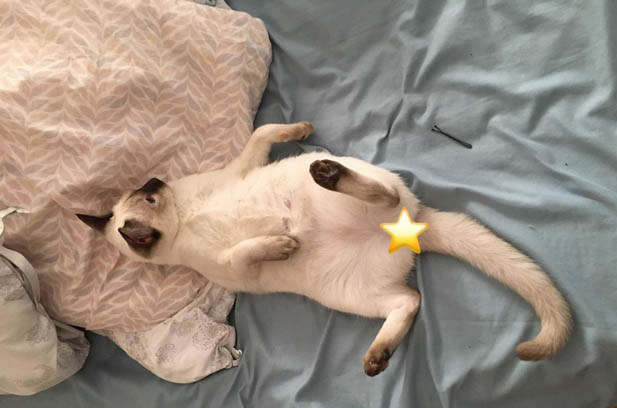The idea of categorizing cats into “beginner breeds” and “advanced breeds” always strikes me as odd. It’s akin to saying there’s a “starter car” for learning to drive—while practical considerations exist, the joy of companionship shouldn’t be limited by labels. As someone who’s shared life with both mixed – breed street cats and purebreds, I believe the most important factor in cat ownership isn’t breed or experience level—it’s love, patience, and respect for the individual cat. Let’s explore why all cats, especially resilient street cats, make extraordinary companions, using my beloved tortoiseshell cat, Mimi, as a shining example.
The Myth of “Beginner Cats”: Why Breed Shouldn’t Define Adoptability
The notion that new owners should stick to “easy” breeds like street cats oversimplifies feline behavior. While purebred cats may have specific health or temperament trends due to breeding, every cat—whether a pedigreed Siamese or a stray tabby—has a unique personality. Mimi, a tortoiseshell rescued from beneath a school bus, is a testament to this diversity.

When I found her, she was a tiny, shivering bundle, meowing pitifully with no mother in sight. Assuming she’d been abandoned, I took her in. Contrary to the stereotype of “street cats being wild,” Mimi was instantly affectionate. She’d curl into my hoodie pocket during lectures, purring loudly, and follow me from room to room like a shadow. Her “wild” side? Occasional zoomies around the apartment at 2 a.m., but even purebred kittens exhibit the same playful chaos.
Resilience in Rescue: The Unseen Strength of Street Cats
One of the greatest misconceptions about stray cats is that they’re “harder to care for.” In reality, many, like Mimi, adapt remarkably well to domestic life. Street cats often develop survival skills that translate to resilience:
Health Hardiness: Mimi survived her first weeks on scavenged food and limited shelter, making her surprisingly robust. While purebreds may suffer from genetic issues due to inbreeding (e.g., Persians’ breathing problems, Ragdolls’ heart conditions), Mimi’s mixed genes likely gave her a stronger immune system.
Adaptability: From navigating busy campus streets to living in a quiet suburban home, Mimi adjusted seamlessly. She learned to tolerate my noisy roommates, coexist with a dog – friendly neighbor, and even adapt to a vegetarian household (though she firmly insists on her chicken – based kibble).
Affection Unleashed: Far from being “unloving,” Mimi craves human contact. When my parents split their time between two rooms, she’d trot back and forth, meowing insistently until they reunited—then settle between them, purring contentedly. Her need for togetherness reflects a deep – rooted desire for family, not breed – specific behavior.
Mimi’s Journey: From Abandonment to Beloved Family Member
Mimi’s early life was marked by hardship. We suspect she was abandoned due to a health condition—epilepsy, which developed when she was six months old. Seizures terrified us at first, but with veterinary care and love, she thrived. Today, she takes daily medication, and while her seizures are rare, they’ve never diminished her spirit. She still chases butterflies through the window, steals my dad’s slippers as “toys,” and greets every visitor with a headbutt.
Her story challenges the myth that “perfect” cats make the best pets. Mimi isn’t “easy”—she has special needs, occasional zoomies that knock over vases, and a habit of waking us at 5 a.m. for breakfast. But her quirks are what make her unforgettable. She’s taught us patience, the importance of veterinary care, and the joy of loving a creature not despite its flaws, but because of them.
The Universal Language of Cats: Behaviors That Bind All Felines
Contrary to breed stereotypes, all cats share fundamental behaviors. A tiger’s paw – licking ritual is identical to Mimi’s meticulous grooming. A Siamese’s chatty nature mirrors the stray tabby’s meows for attention. Why? Because feline behavior stems from shared instincts, not bloodlines:
Grooming: All cats spend hours cleaning themselves, whether they’re lounging on a velvet cushion or a cardboard box.
Play: From batting at laser pointers to chasing leaves, play is a universal language. Mimi’s favorite toy? A crumpled paper ball, just like any purebred kitten’s.
Affection: Whether a Ragdoll flopping into your arms or a street cat curling into your lap, cats express love through proximity and touch.
Why Breed Shouldn’t Matter: The Heart Over Pedigree Philosophy
In a world where purebred cats can cost thousands, it’s easy to overlook the charm of mixed – breed cats. But Mimi, with her mottled tortoiseshell coat and stubborn spirit, proves that love has no breed. Here’s what she’s taught me:
Every Cat Deserves a Chance: Abandoned, stray, or with special needs—no cat should be judged by its past or lineage.
Rescue is Rewarding: Mimi didn’t “need” me—I needed her. Her presence turned a lonely college apartment into a home.
Love Transcends Labels: Whether you choose a purebred or a rescue, the bond you build is what matters. Mimi’s epilepsy doesn’t make her “less” of a cat; it makes her uniquely ours.
Conclusion: The Best Cat is the One Who Chooses You
So, to the question of “beginner cats”—there’s no right answer. What matters is readiness to commit, learn, and love unconditionally. Mimi, my “imperfect” rescue, is a reminder that the most extraordinary companions are often the ones society overlooks.
If you’re considering adoption, visit a shelter. Look into the eyes of a cat that’s survived hardship, or a purebred with a quirky habit. You’ll find that whether they’re a “beginner cat” or not, they all share one thing: a desire to be loved. And in return, they’ll love you back—unconditionally, perfectly, and entirely on their own terms.
Leave a Reply